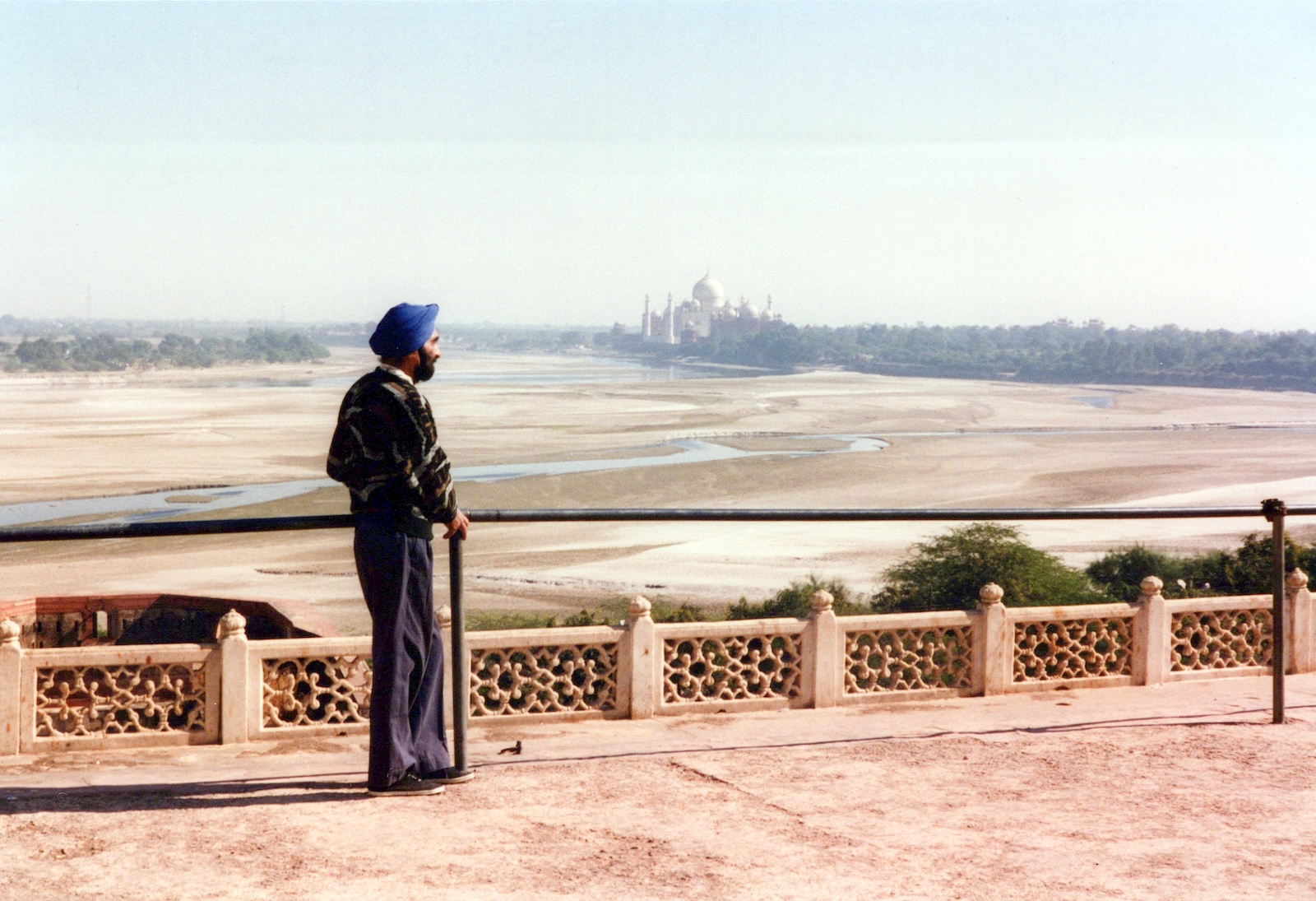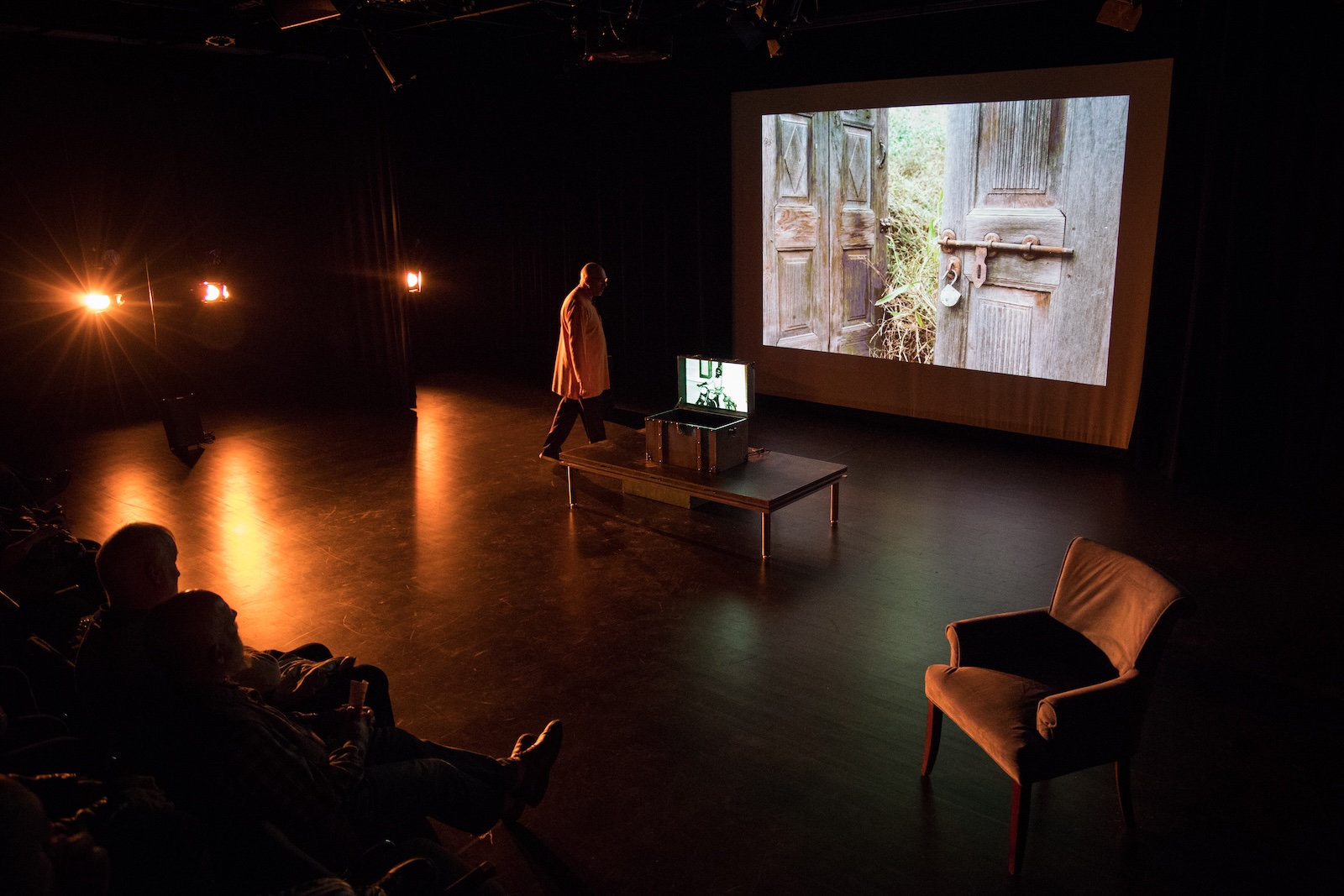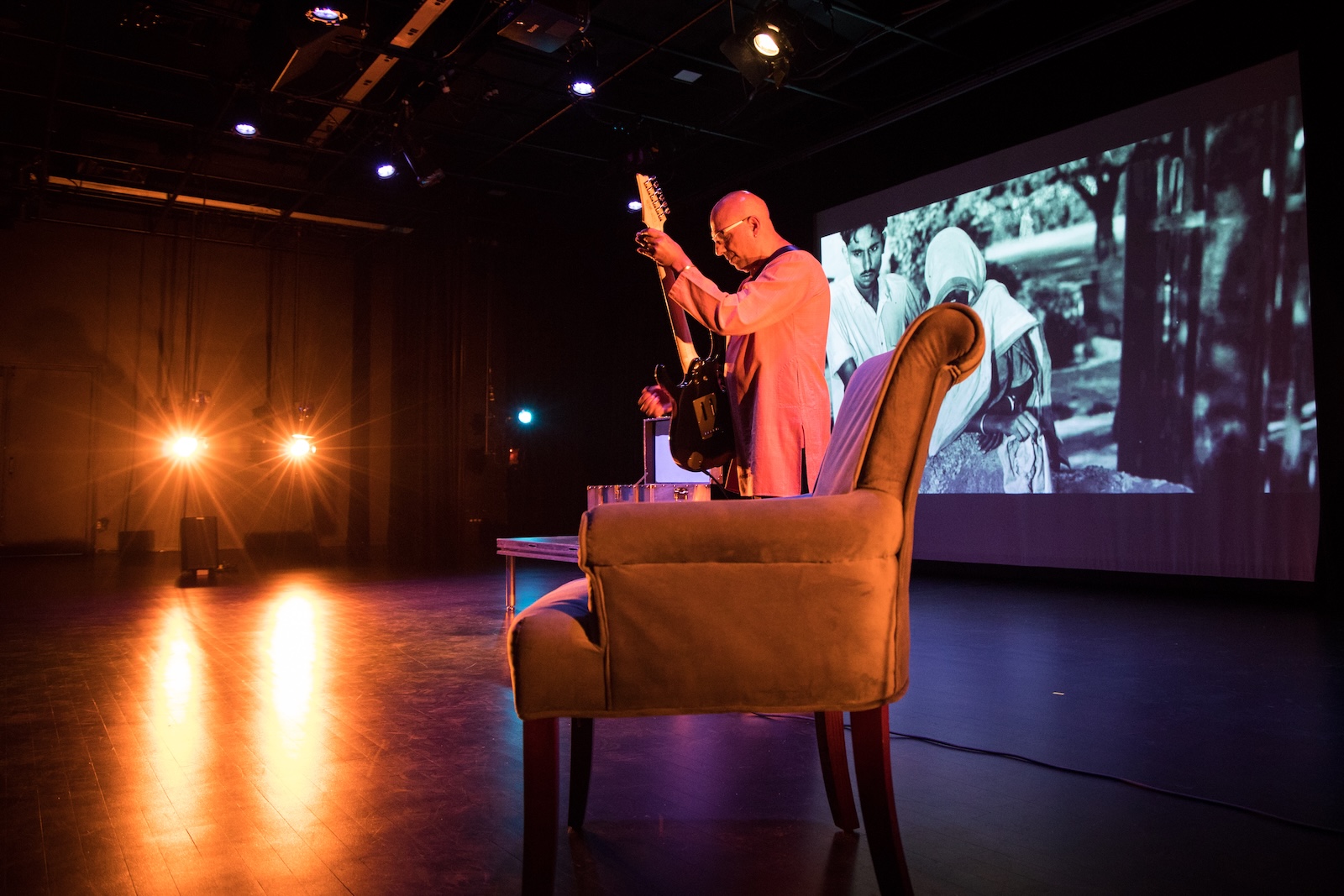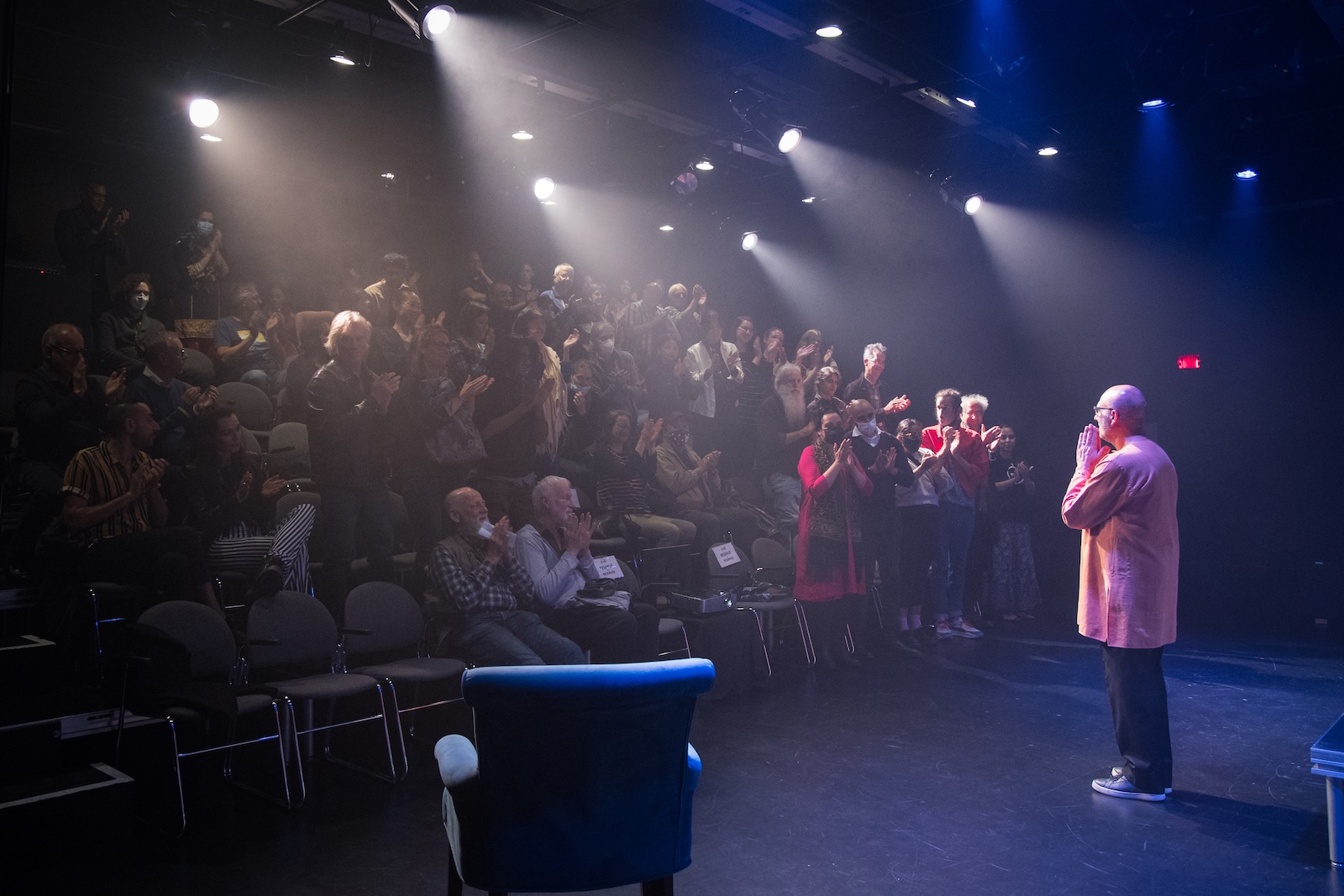Panj (ਪੰਜ)
Art~Healing~Transformation

Panj (ਪੰਜ)* is an interdisciplinary performance that weaves together storytelling, live music (psychedelic rock fusion), and video.
Himmat struggles to accept the sudden and unexpected death of his father, Harchand. A river of silence has separated them since Himmat came out as queer. There are words left unspoken, reconciliation that never came, and questions about his father's feelings towards him that remain unresolved.
Himmat turns to his mother, Surjit, for support. As they share memories of Harchand, she reveals confidences about her husband's struggles taking care of his family through a series of migrations. As they walk back through history hand in hand, they revisit the impacts of the Partition of India on each of them. Together, mother and son, each bears witness to the wounds that the other carries.
As Himmat recalls his 40th birthday and the "peti," a traditional Indian wooden chest that his father made for him, he discovers that love can manifest in many ways, that creative expression can transcend silence, and that understanding can emerge even after loss.
Panj (ਪੰਜ) follows the journey of Himmat's Punjabi Sikh family across five pivotal moments in their history, from the trauma of British decolonization and the Partition of India and Pakistan in 1947, through the immigrant experience from Britain to Canada, culminating in Himmat's emergence as a queer artist.
The performance explores how the effects of dislocation and separation are passed on across generations, taking the audience from the divided rivers of Punjab to the banks of the St-Lawrence, where healing becomes possible.
* Panj (ਪੰਜ) is the Punjabi word for five. Punjab means the land of five rivers. The origin of these words is Persian.

The Making of Panj (ਪੰਜ)
Panj is a work in progress that was presented at Montreal Arts Interculturels' (MAI) theatre space during Festival Accès-Asie for two nights in May 2022, Asian Heritage Month.
The performance emerged from the healing work I undertook after my father's death. The storyline crystallized through three parallel processes: embodied healing practices (mindfulness and EMDR therapy), deepening conversations with my mother, and reflective journaling that helped me process decades of family history.
Simultaneously, I began exploring my father's extensive photographic archive—he was a gifted amateur photographer who had documented our family life for decades. Reviewing the images he had taken of me throughout my life became a meditation unto itself. I began to see myself through his lens, to understand how he had witnessed my journey. I saw again how he felt proud of me, and how lovingly he had documented my achievements. His silence did not hide rejection of my queerness, rather it reflected perhaps his own struggle with a world that was not accepting towards his child. I came to understand that his love had always been there. I was listening for his words, but he was speaking in a visual language, one I hadn't yet learned to read. His photographs had been showing me what I had yearned all my life to hear in words.
My musical practice is informed by my education in western classical music; the Sikh religious music, Bollywood soundtracks, Indian classical and folk musics that would play in my childhood home; and contemporary popular music, in particular the British Art Rock movement of the 1970s. I have baptized the style "Psychedelic Rock Fusion"!
The performance weaves together prose, poetry, live psychedelic rock fusion music, and projected images to create a multi-sensory journey through memory and reconciliation. Through this creative process, I discovered how artistic expression and therapeutic healing can work in synergy — how bearing witness to our stories through art can be transformative.

Reviews
